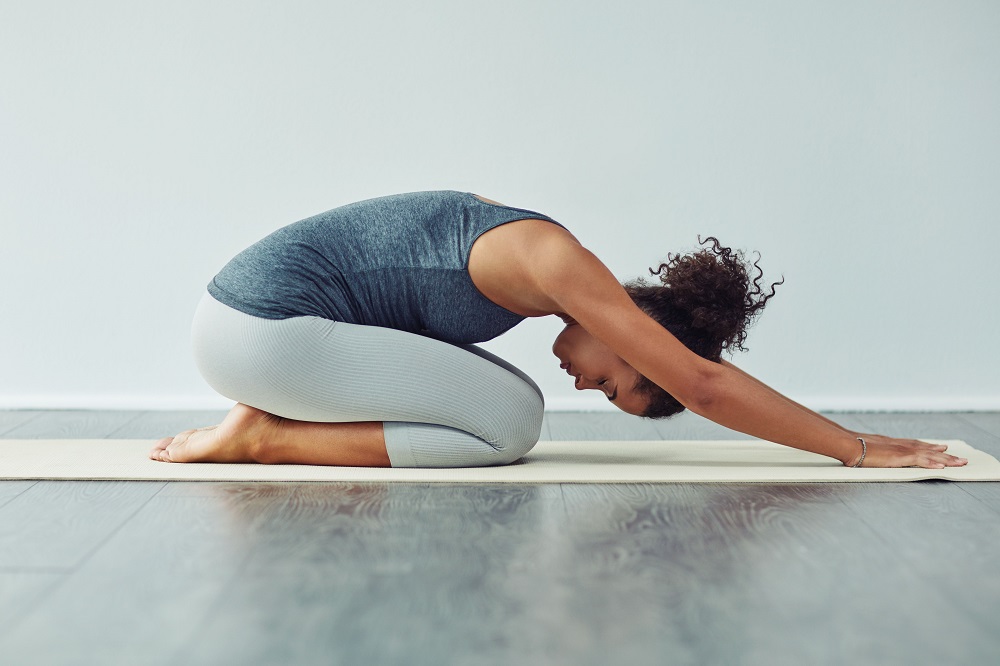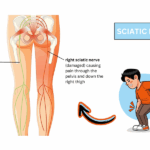Ever Feel Like Your Back Is Just… Always Hurting?
It creeps up after a long drive. It flares when you bend to pick up your kid. Some mornings, it’s the first thing you feel before your feet even hit the floor.
Back pain doesn’t need to be intense to be exhausting. Even that dull, lingering ache can slowly chip away at your energy, your focus, and your mood.
But here’s something hopeful: You might not need a chiropractor, a standing desk, or a $400 massage gun. Sometimes, the most powerful back pain relief starts with something much simpler — gentle daily movement.
In fact, just 10 minutes of targeted stretches a day can make a surprising difference.
Let’s walk through what works — and why it helps.
✅ Quick Takeaways
-
Gentle daily stretching can help reduce back pain by improving flexibility and blood flow
-
Consistency is more important than intensity — 5–10 minutes daily can be enough
-
Focus on loosening tight hips, hamstrings, and lower back muscles
-
No fancy gear or yoga experience required
Why Stretching Actually Helps Back Pain (It’s Not Just Hype)
You’ve probably heard that stretching helps, but maybe you’re wondering why.
Here’s the simple version:
When muscles around your spine — especially your hamstrings, hips, and lower back — get tight, they pull your posture out of whack. That creates strain, misalignment, and stiffness in your back.
Now imagine what happens after sitting for hours at work, driving, or scrolling on your phone.
Over time, your body starts adapting to that hunched-over, inactive position. Certain muscles weaken. Others shorten. And your spine? It bears the brunt of it.
Stretching is like a reset. It reminds your body what alignment and mobility feel like. It brings blood flow back to stiff areas, gently lengthens tight muscles, and activates ones that have gone quiet.
Even one session can bring relief. But the real magic is in making it a habit.
The 7 Best Back Pain Relief Stretches (No Equipment Needed)
These are simple, beginner-friendly, and designed to be done on a mat or soft floor. Aim to hold each one for 30–60 seconds, breathing slowly.
1. Child’s Pose (For Lower Back & Hips)
This gentle yoga pose stretches your spine, glutes, and hips all at once.
How to do it:
Kneel on the floor, big toes touching, knees wide. Sit your hips back toward your heels, then stretch your arms forward and rest your forehead on the floor.
Why it helps:
Relieves compression in the lower back and opens the hips.
2. Cat-Cow Stretch (For Spine Mobility)
This dynamic movement gets your spine moving in both directions — flexion and extension.
How to do it:
Start on hands and knees. As you inhale, arch your back and lift your head/tailbone (cow). As you exhale, round your spine and tuck your chin (cat). Move slowly.
Why it helps:
Improves spinal mobility and reduces stiffness.
3. Knee-to-Chest Stretch (For Lumbar Release)
This one gently lengthens the lower back muscles.
How to do it:
Lie on your back. Bring one knee to your chest, holding it with both hands. Keep the other leg bent or straight. Switch sides.
Why it helps:
Takes pressure off the lumbar spine and can relieve mild sciatica symptoms.
4. Supine Twist (For Spine & Glutes)
Twisting helps stretch the back and outer hip.
How to do it:
Lie on your back. Bring one knee across your body to the opposite side, letting it fall naturally while keeping your shoulders grounded. Stretch your opposite arm out to the side.
Why it helps:
Gently mobilizes the spine and eases tight glutes.
5. Hamstring Stretch (For Lower Back Relief)
Tight hamstrings often contribute to lower back pain.
How to do it:
Lie on your back. Lift one leg up and hold behind the thigh or calf. Keep the other leg bent or straight. Don’t force the stretch.
Why it helps:
Lengthens the back of your leg, reducing strain on the lower spine.
6. Figure-Four Stretch (For Piriformis & Hips)
If you sit a lot, this one’s a game-changer.
How to do it:
Lie on your back. Cross one ankle over the opposite knee. Grab behind the bottom leg and gently pull it toward your chest.
Why it helps:
Targets deep hip muscles that can irritate the sciatic nerve.
7. Pelvic Tilt (For Core & Lower Back Activation)
Not a stretch exactly — more of a re-activation.
How to do it:
Lie on your back with knees bent. Gently flatten your lower back against the floor by tilting your pelvis up slightly. Hold for a few seconds and release.
Why it helps:
Re-engages the deep core muscles that stabilize your spine.
What If You Only Have 5 Minutes?
Totally fine.
Here’s a 5-minute express sequence you can do anytime:
-
Cat-Cow – 1 minute
-
Child’s Pose – 1 minute
-
Figure-Four Stretch – 1 minute each side
-
Pelvic Tilt – 1 minute
Set a timer. Add it to your morning or evening routine. Even small consistent doses build up over time.
What People Say After Trying It
“I thought I needed a new mattress, but turns out I just needed to stretch daily. My back stopped screaming every morning.” — Maya, 39
“I was skeptical. But doing these during lunch breaks literally saved my posture working from home.” — David, 28
“I started doing this while watching Netflix. Now I don’t feel like a human question mark anymore.” — Elise, 47
When to Be Careful
Stretching is generally safe, but there are a few things to keep in mind:
-
Don’t stretch through sharp pain — that’s your body’s red flag
-
Move slowly, especially if you’re stiff or injured
-
If your back pain is severe, sudden, or getting worse, talk to a healthcare professional
And remember: stretching can help relieve discomfort, but it’s not a cure-all for every back issue.
Make It Stick: Tiny Habits That Work
You don’t need to overhaul your life. Just stack the habit onto something you already do:
-
Right after brushing your teeth
-
During your favorite podcast
-
While the coffee brews
-
Before bed, instead of doomscrolling
It doesn’t need to be perfect. Just show up — your spine will thank you.
Back pain doesn’t have to rule your day. Sometimes, the simplest tools are the most powerful — like rolling out a mat and giving your body 10 minutes of your full attention.
You don’t need to be flexible. You don’t need to do yoga. You just need a little willingness to move, breathe, and try.
Start today. Your future back will be grateful.
🙋 FAQ: Back Pain Relief Stretches
1. Can stretching really help chronic back pain?
Yes, consistent gentle stretching can improve mobility, reduce tension, and support spinal alignment. But chronic pain may also require guidance from a physical therapist.
2. Is it better to stretch in the morning or at night?
Whichever time you’ll actually stick to! Morning helps loosen up stiff joints, while evening can relax the body before sleep.
3. How long should I hold each stretch?
Aim for 30–60 seconds per stretch, breathing slowly. If you feel relief, you can stay longer.
4. What if stretching makes my back hurt more?
Stop and consult a doctor or physical therapist. Some stretches might not be right for every condition.
5. Do I need to warm up before stretching?
A light warm-up (like walking for 2–3 minutes) helps, but for gentle stretches like these, it’s okay to start slow without one.
6. Should I stretch every day?
Daily is great, even if it’s just 5 minutes. Consistency is key.
7. Can stretching replace physical therapy?
Not entirely. Stretching can complement therapy but isn’t a full replacement for professional care.
8. Is yoga better than stretching?
Yoga includes stretching, but also adds breathing, balance, and strength. You can benefit from either — or both.
9. Can kids and older adults do these stretches?
Yes! These stretches are gentle and safe for most age groups. Always check with a doctor if unsure.
10. How long before I feel results?
Some people feel relief immediately. For deeper change, give it 1–2 weeks of consistent practice.


